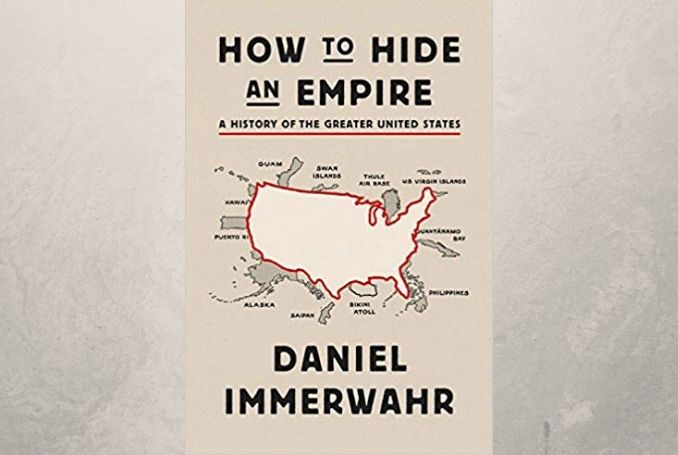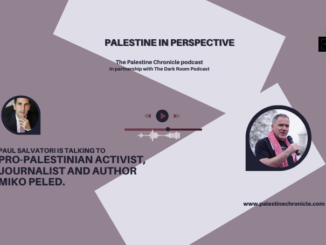
By Jim Miles
(How to Hide an Empire: A History of the Greater United States. Daniel Immerwahr. Farrer, Straus and Giroux, New York, 2019.)
The Greater United States of the title is not just the contiguous states of the mainland plus insets for Alaska and Hawaii but includes many of the smaller – and not small – territories and possessions held by the U.S. around the world.
It is “seeing a familiar history differently” from the perspective of what were and are considered territories or possessions.
It is a story of land, slavery, economics, the military, and technology leading to globalization of trade, transport, and communications, supported by a global network of military bases. How to Hide an Empire is an intriguing read into a history that is only touched upon in passing if at all in mainstream presentations.
Racism
The overall theme of the book as it explores the many different areas involved is that of racism. It is not stated overtly as such, but in each historical episode, from each archival story, racism always plays a role, in the typical words about savages and lesser races needing to be civilized (at best) or simply to be done away with if recalcitrant (quite common!).
It starts with the first settlers to North America, following the expansion of the U.S. across the continent. The land, in general, went from wilderness to the Indian Territory, to a pre-state territory and finally into statehood. It then looks at the first overseas expansions with the Spanish-American war of which very little is known in its true light.
A fair bit of time is spent on this war, describing how the U.S. did not really win the war as Spain was already losing to the revolutions already occurring in Cuba, the Philippines and other colonies. They found their excuse to intervene, sort of supported the successful guerilla fighters, then once victorious turned against them in order to install their own colonial apparatus to control the savages.
From this larger war, How to Hide an Empire goes through the interesting unknown histories of some smaller possessions, mostly rocky dry islets for guano, a late 19th-century chemical needed for agriculture. This introduces what Immerwahr calls the “pointillist” empire, the many small islets and locations (e.g. Guantanamo, Okinawa) scattered around the world for most strategic military purposes. Kidnapping, racism, and exploitation accompanied these acquisitions.
How to Hide an Empire
After racism as a theme, the main idea of the book, a hidden empire, is obvious, and the answer is also obvious. The first is simply to ignore it: these histories are seldom if ever mentioned in the mainstream media or even in alternate media; the education system presents its histories in terms of defining dates and glorified names and supposed victories.
But above all the cultures of the people involved are destroyed. The language is forbidden, and children are removed to schools where they cannot speak their native language.
They are then inculcated with the dominant myth of their needing enlightenment or civilization or in most early cases Christianity. Another manner to destroy the culture is by changing laws to give the colonial/administrative government power over all aspects of life, civilian and military.
Voting rights play significantly into this with laws on property, language, and education affecting people’s right to vote.
Empire
“Foreign prisons, walled compounds, hidden bases, island colonies, GPS antenna stations, pinpoint strikes, networks, planes and drones – these are the locales and instruments of the ongoing war on terror. This is the shape of power today.”
There is no question in this presentation that the U.S. is and always was an empire. Today it has changed from the landholding empires of the previous centuries European empires to that of an integrated economic, technological, surveillance empire.
Yet, for all that, “Territory still matters today…the history of the United States is the history of empire.”
Writing Style
Immerwahr’s writing is a very well presented anecdotal style creating an interesting personal history of the different areas. When discussing the guano story, significant for U.S. agriculture, he presents the story of Fritz Haber who later discovered how to fix nitrogen from the air, thus relieving pressure on the exhausted guano islets. He later created the poison gases used in WW I.
His wife Clara, a gifted scientist in her own right, supposedly distraught over something in their marriage, committed “suicide”, but knowing how these things usually work out today, she was probably murdered by Haber, who then went on to create Zyklon A and Zyklon B, the latter used in the German gas chambers.
Immerwahr’s writing includes many little interconnected stories such as this to present a highly readable and interesting ‘unseen’ history of U.S. overseas possessions. It is well worth the read for both those introducing themselves to the concept to the U.S. as an empire, and those who already know it.
– Jim Miles is a Canadian educator and a regular contributor/columnist of opinion pieces and book reviews to Palestine Chronicles. His interest in this topic stems originally from an environmental perspective, which encompasses the militarization and economic subjugation of the global community and its commodification by corporate governance and by the American government.

– Jim Miles is a Canadian educator and a regular contributor/columnist of opinion pieces and book reviews to Palestine Chronicles. His interest in this topic stems originally from an environmental perspective, which encompasses the militarization and economic subjugation of the global community and its commodification by corporate governance and by the American government.







